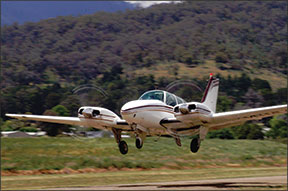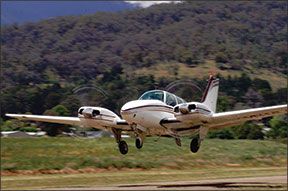I usually find the material in your publication valuable. The articles are mostly concise and as far as I can tell accurate. I have read Jeb Burnside a number of times without feeling the need to comment. His most recent article, however, is an exception. “High, Hot Downwind,” August 2013’s Accident Probe, left me disturbed. In the last paragraph, he says there is evidence of a cavalier attitude on the part of the dead pilot exemplified by the pilot’s almost immediate gear retraction and a quick initiation of a turn before gaining altitude.

288
In my experience a quick gear retraction is not evidence of a cavalier attitude. I fly a Beechcraft 58P Baron and as soon as I break ground, the gear is up and I am climbing as fast as I can. I have been flying like this since I got my certificate in 1964. To call me cavalier is evidence of an elitist attitude. It seems like some people get some space in a magazine and think they are an expert in all things flying.
I suggest that Mr. Burnside keep his opinions to himself and stick to the facts. If he can’t restrain himself then why don’t you create a section called Editorial Opinion as a sandbox he can play in?
George Reich
Via e-mail
More Gear
Regarding “Twin Takeoffs” in the August 2013 issue, I do not fly twins. I do fly complex, retractable singles. I have subscribed to what I believe is the airline method of raising the gear: Once a positive rate of climb is achieved and you are out of ground effect, and the added drag of raising your gear in some aircraft will not cause settling or hitting an obstacle, raise the gear regardless of runway remaining.
I have never tested and likely never will climb to 50 feet agl at a 5000-foot-long runway and pulled the power to see if I can slow down enough to land and safely stop before the end. I doubt anyone does that kind of testing. If you are at 50 feet and at VY 3000 feet down the runway, I doubt for most retractable aircraft that you could slow down to final approach speed and land safely in the remaining 2000 feet. It would be an interesting test at a 10,000-foot runway.
If I had a power failure shortly after takeoff on a typical GA runway, I would rather land gear up in about 300 feet of grinding noises than risk running off the end of the runway into a fence or a ditch or whatever: I want my first phone call to be to my insurance company rather than to 911. Even though I do not fly twins, I did learn a lot from the article. I just disagree with the author on when to raise the gear for any airplane.
Herb Rosenthal
Bethesda, Md.
The question of when to raise the landing gear is always a hot topic among pilots. In our March 2006 issue, we highlighted the recommendations from various manufacturers. For example, a POH for a Cessna 210, the type involved in the accident discussed in August’s Accident Probe, states, “Since the landing gear swings downward approximately two feet as it starts the retraction cycle, damage can result by retracting it before obtaining at least that much ground clearance.” It’s not clear from the record at what specific altitude the accident pilot initiated gear retraction.
Retracting some airplanes’ landing gear increases drag momentarily. This is true of those types with normally closed inner gear doors, which extend into the slipstream when cycled, and high-wing Cessnas, which rotate the mains 90 degrees. Twins like Mr. Reich’s Baron should be handled differently, since engine-out climb capability is dramatically improved when the gear is in the wells. Retracting a twin’s gear as soon as practical can help ensure adequate climb rates if an engine fails.
In that March 2006 issue, we commented, “There are no universal procedures. The only collective credo is to keep thinking, know your options, know your airplane and use your checklists, but also use some common sense when you have to improvise.” That recommendation still holds true today.




